Get full access with a free account
Benefits of the Coloplast® Professional Educational platform
- Get full access to all educational content, events and resources
- Track your progress
- Share content with your collegues
- Share supporting material with your patient
Wound assessment tool
In this section, you’ll learn all about:
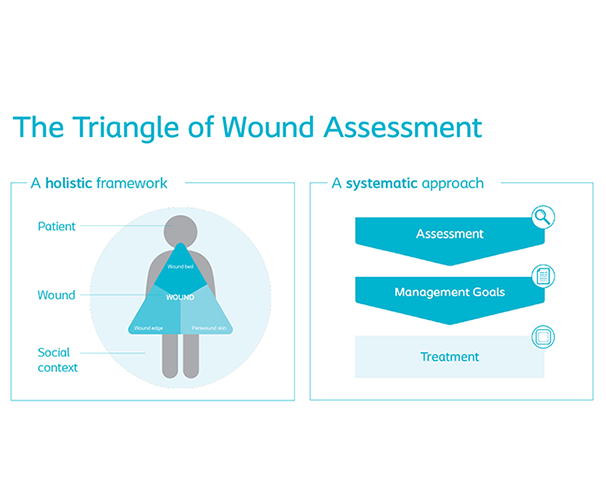
What is the Triangle of Wound Assessment?
Caringfor wounds can be a complex and uncertain process. Wounds change constantly, which means that you must respond to each change in the right way to ensure optimal healing for your patients.
We have created an effective tool to help you do so.
The Triangle of Wound Assessment is a simple and systematic framework that guides you in how to conduct holistic wound management .
It helps you to assess all key areas of the wound and take into account the important factors about the patient and their context that influence a wound’s healing process. It also assists you in setting clear management goals and selecting the best treatment.1

The three key areas of the wound
A wound consists of three key areas: the wound bed; the wound edge; and the skin around the wound - the periwound skin. For all types of wounds - particularly chronic wounds – it is important that all areas of the wound are assessed correctly. The more comprehensive a wound assessment you do, the less likely you are to see complications in the wound such as maceration, infection and biofilm.2
The Triangle of Wound Assessment tool
Using the Triangle of Wound Assessment will not only help you to understand all factors that affect wound healing – from the wound itself to the interaction of medical, social and psychological factors unique to each patient – all of which are critical to developing an effective management plan.4 You will also find that the holistic approach to wound management has a positive impact on the patient’s care experience, all of which come together to speed up healing time and improve your patient’s quality of life.3
The Triangle of Wound Assessment was originally developed 2015 in collaboration with global wound care experts. It was revised in 2019 to include new developments and new challenges in wound care – such as the ‘gap’ between the wound bed and the dressing and biofilm prevention and management.
How to use the Triangle of Wound Assessment
TheTriangle of Wound Assessment is a dynamic tool that presents a six-step approach to wound assessment.3
With this simple tool, you will be able to:
- establish a baseline for your assessment of the wound;
- track the healing progression at each dressing change;
- define a wound management plan that can be used by multidisciplinary care teams; and
- ensure direct involvement of the patient in their care planning and treatment decisions.
The Triangle of Wound Assessment should be used at every patient visit or consultation to assess and document the progression of healing as well as any unexpected delays.
The tool helps you to ensure continuity in the way the wound is assessed and treated. It also makes it much easier for you to hand over care of the patient to other colleagues, who can easily follow up on the focus points you have identified.
Remember always to refer the patient to a specialist if you observe: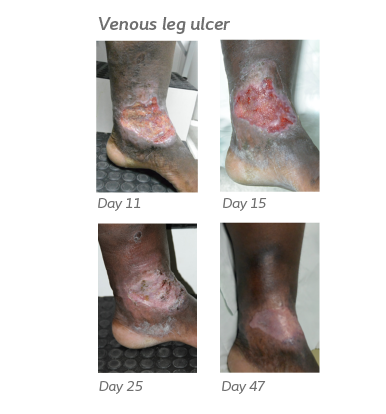
- a less than a 20% improvement in the wound area over a period of four weeks;
- unexpected increase in exudate;
- suspected infection or biofilm;
- increased pain or a general decline in the patient’s health and wellbeing.4
You can download the Triangle of Wound Assessment form here. If you wish to learn more about Wound Assessment & Management, please visit the HEAL Medical Education programme here.
References
- Dowsett C et al. Taking wound assessment beyond the edge. Wounds International 2015;6(1)
- Dowsett C et al. A focus on the Triangle of Wound Assessment – addressing the gap challenge and identifying suspected biofilm in clinical practice. Wounds International 2019:10 (3)
- R. Liberato de Moura, C. Dowsett. Advancing practice in holistic wound management: a consensus-based call to action. Wounds International 2020;11(4)
- Dowsett et al. (2020). Closing the gap between the evidence and clinical practice – a consensus report on exudate management (11(3))
You may also be interested in…
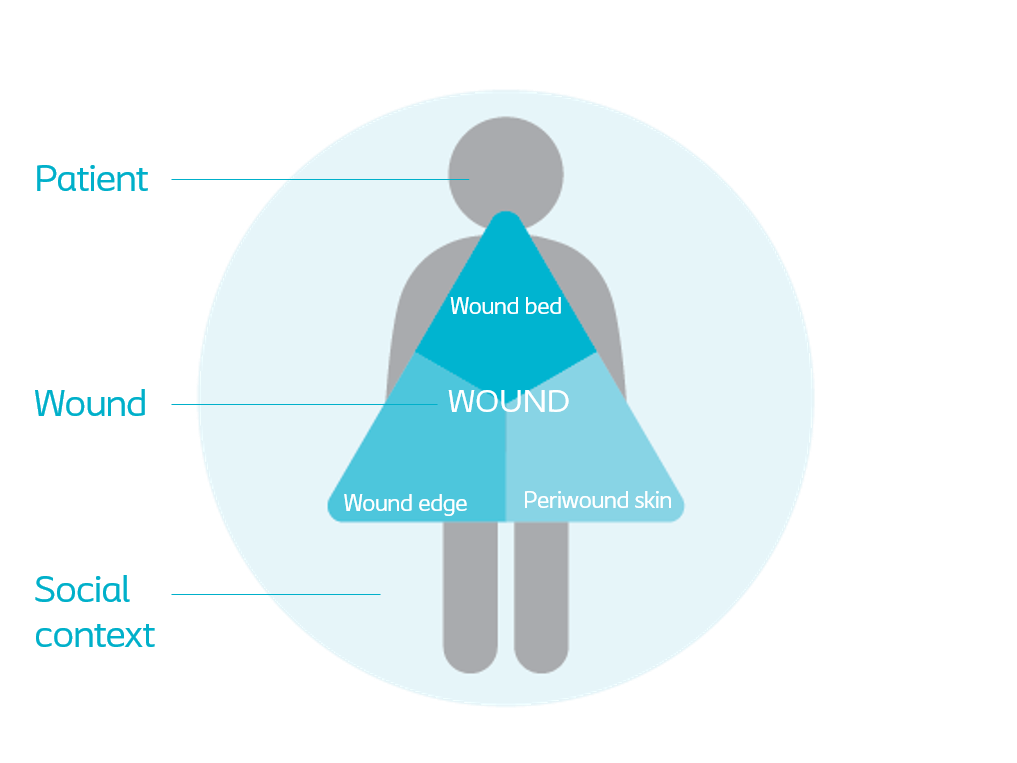
HEAL e-learning
Learn about holistic and systematic wound assessment and management with this EWMA-endorsed course.

Patient case video
Watch how a recurring pressure ulcer was managed with a silicone foam dressing.
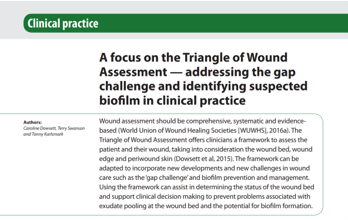
Wound assessment & documentation
Learn how to assess and manage the gap and suspected biofilms.
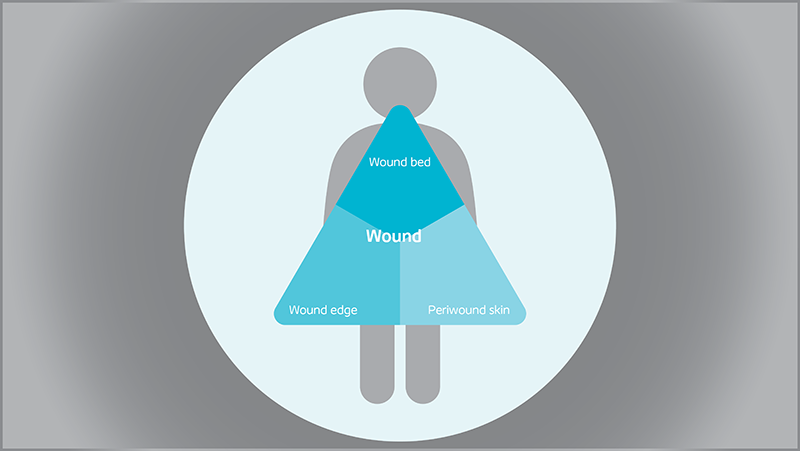
Triangle of Wound Assessment
Conduct a holistic and systematic wound assessment with our tool.
